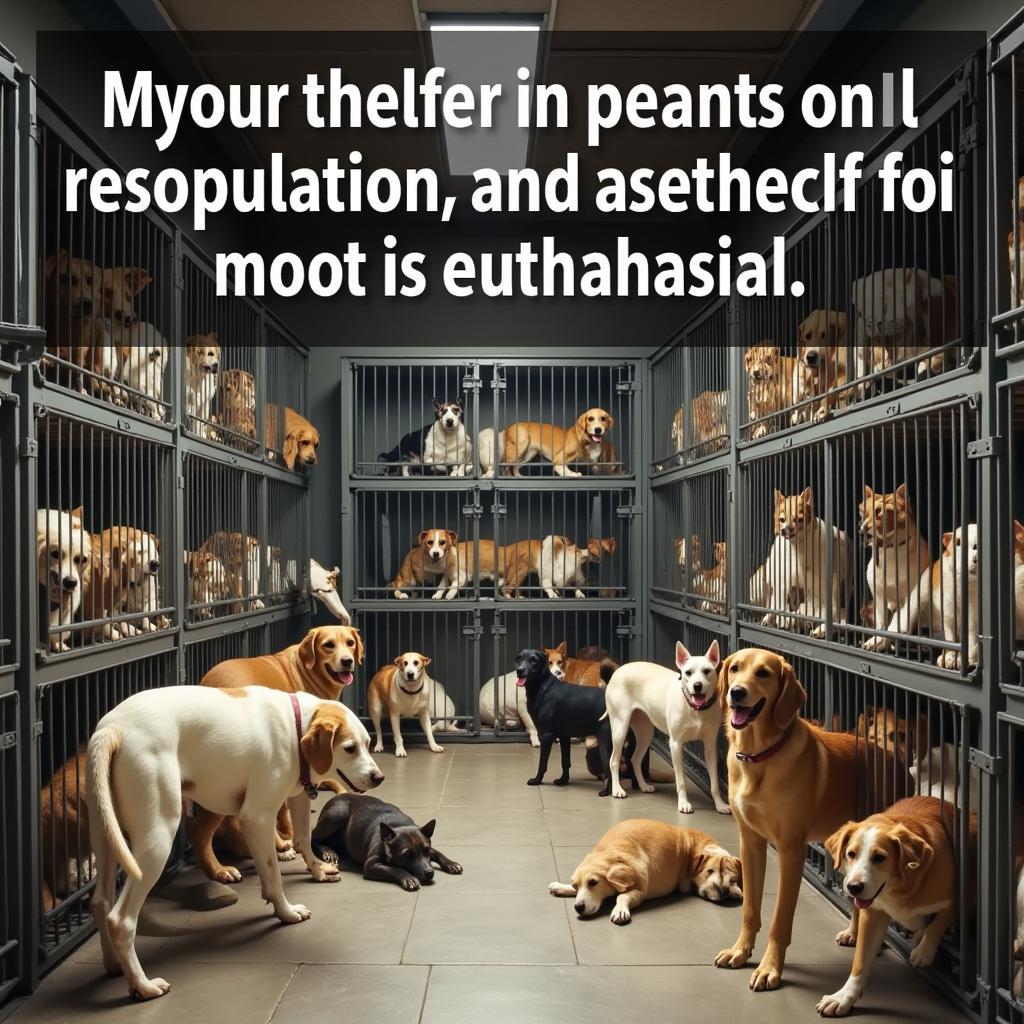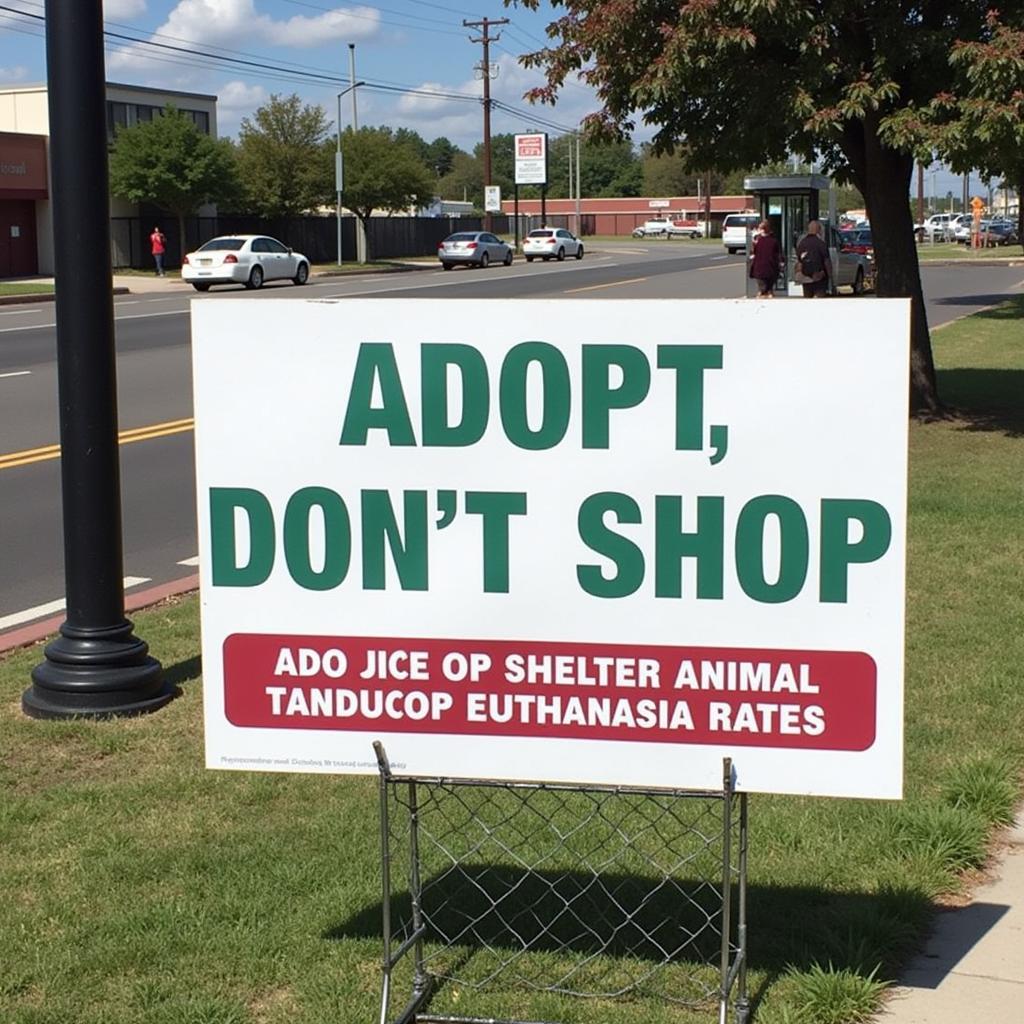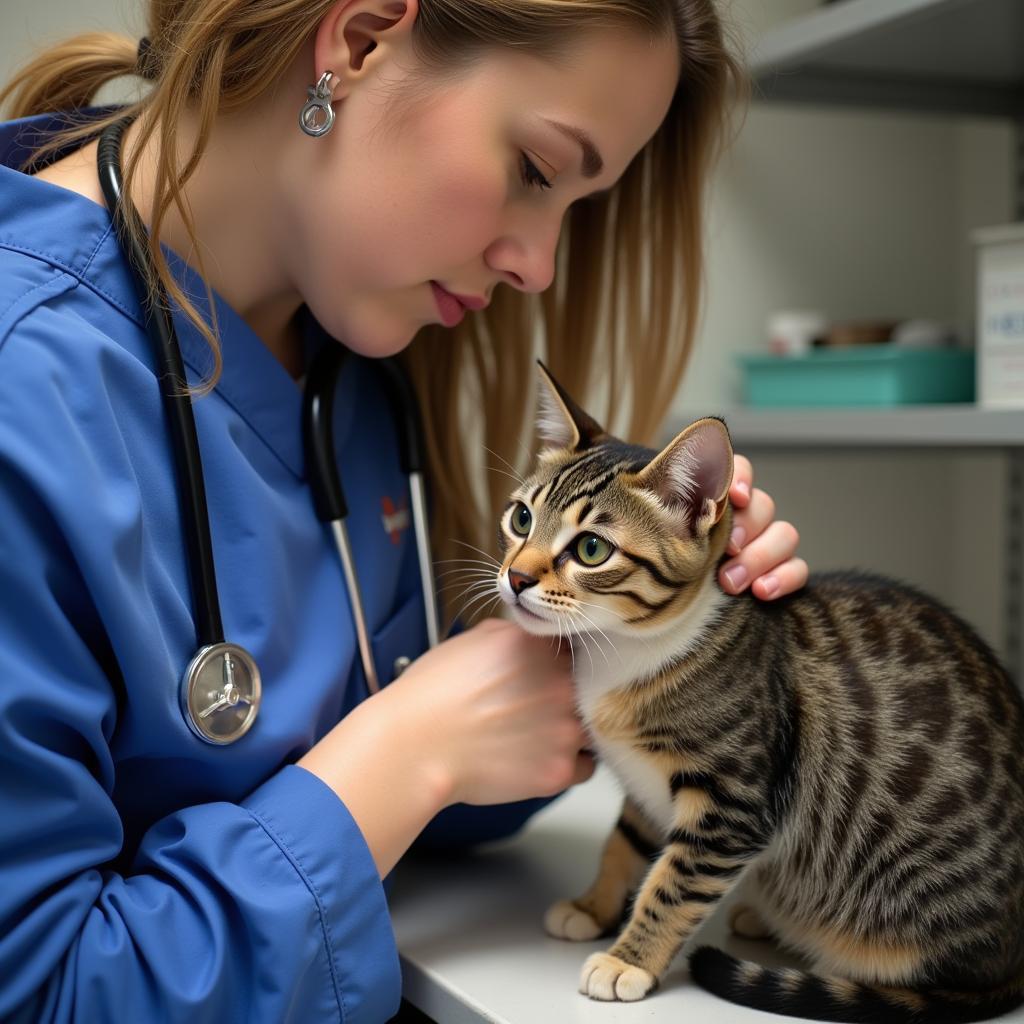Do Humane Societies Kill Animals? This is a complex question that evokes strong emotions and requires a nuanced understanding of the challenges facing animal shelters. While the ideal is to find loving homes for every animal, the unfortunate reality is that euthanasia is sometimes necessary in these organizations.
If you’re considering volunteering at your local humane society, you might want to check the humane society volunteer age. Understanding the age requirements can help you prepare for your volunteer journey.
Why Euthanasia Happens in Humane Societies
Several factors contribute to the difficult decision to euthanize animals in humane societies. Overpopulation is a significant issue. Shelters often receive more animals than they have space or resources for, creating a strain on their ability to provide adequate care. This influx can be due to uncontrolled breeding, owner surrenders, and stray animals. Limited resources, including funding, staffing, and physical space, also play a role. Sadly, some animals arrive at shelters with severe medical or behavioral issues that make them unsuitable for adoption, even with extensive rehabilitation efforts.
Unfortunately, not all animals are easily adoptable. Factors like age, breed, and temperament can influence an animal’s chances of finding a forever home. Some animals may have behavioral challenges that require specialized training and care, which can be a barrier to adoption.
 Overcrowded Animal Shelter Reflects Euthanasia Challenges
Overcrowded Animal Shelter Reflects Euthanasia Challenges
Exploring Alternatives to Euthanasia
Humane societies are continually working to reduce the need for euthanasia through various programs. Promoting spay and neuter initiatives helps control the pet population, preventing unwanted litters from entering shelters in the first place. Adoption events and outreach programs aim to connect animals with potential adopters and raise awareness about the importance of adopting shelter pets. Many shelters also partner with rescue organizations and foster care programs to provide temporary homes for animals while they await adoption. These programs provide a crucial safety net and can significantly reduce the number of animals facing euthanasia.
If you’re curious about veterinary services at a particular shelter, the westland humane society vet link might provide valuable information. Understanding the veterinary care available can help you assess the shelter’s commitment to animal welfare.
How Can I Help Reduce Euthanasia Rates?
There are many ways individuals can contribute to reducing euthanasia rates. Adopting a pet from a shelter or rescue organization is a powerful way to give an animal a second chance at life. Volunteering your time and skills at a local shelter can also make a significant difference. Donating to shelters helps them provide essential resources and care for the animals. Educating others about responsible pet ownership, including the importance of spaying/neutering and providing proper care, can also help prevent animals from ending up in shelters.
 Adopt Don't Shop Sign Encourages Shelter Adoption
Adopt Don't Shop Sign Encourages Shelter Adoption
What is a No-Kill Shelter?
The term “no-kill” shelter generally refers to a facility that commits to saving healthy or treatable animals. However, even no-kill shelters may sometimes euthanize animals due to severe behavioral issues or untreatable medical conditions. Understanding the nuances of this term is important when considering where to adopt or volunteer.
You can find more information about specific humane societies, like the humane society of greater miami north, to learn about their specific policies and practices.
Facing the Reality of “Do Humane Societies Kill Animals?”
While the question, “do humane societies kill animals?”, is a difficult one to confront, understanding the complex factors involved is crucial. Humane societies strive to provide the best possible care for animals in their charge, and euthanasia is often a last resort. By supporting shelters through adoption, volunteering, and donations, we can work together to create a future where fewer animals face this heartbreaking outcome.
For details on leadership in animal welfare, you might find the humane society ceo pay information helpful. Understanding the structure of these organizations can offer insights into their operations.
 Veterinarian Comforting a Cat in a Humane Society
Veterinarian Comforting a Cat in a Humane Society
Conclusion
The question “do humane societies kill animals?” is a painful but necessary one to address. While euthanasia is a reality in some shelters, it’s often a last resort due to overpopulation, limited resources, and the condition of the animals. By understanding these challenges and actively supporting humane societies, we can work towards a future where every animal has a loving home. Consider adopting from your local shelter like the humane society jamestown, volunteering your time, or donating to support their vital work. Every action, big or small, can help create a more humane world for animals.
FAQ
- What are the main reasons for euthanasia in humane societies?
- How can I support my local humane society?
- What does “no-kill” shelter mean?
- What are some alternatives to euthanasia practiced by humane societies?
- How can I help reduce pet overpopulation?
- What should I consider before adopting a pet from a shelter?
- How can I find out more about my local humane society’s euthanasia policies?
Do you have any other questions? For more information, you can find related articles on our website about humane society volunteer age and westland humane society vet.
When you need support, contact Phone Number: 02043854663, Email: [email protected] Or visit us at: Khu 34, Bac Giang, 260000, Vietnam. We have a 24/7 customer service team.